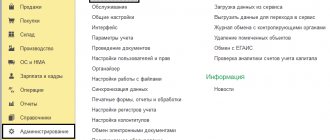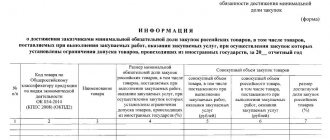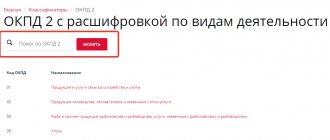The patent tax system differs from other regimes in that a separate patent must be obtained for each type of activity. The recommended list of business areas for PSN is given in Article 346.43 of the Tax Code of the Russian Federation, but in the regions it can be reduced or supplemented.
In 2021, the constituent entities of the Russian Federation received the right to establish almost any amount of potential income on the PSN, from which the tax is calculated at a rate of 6%. This has led to the fact that in some municipalities the cost of a patent has increased several times.
Therefore, before applying for an individual entrepreneur patent, we recommend that you find out its cost using the Federal Tax Service calculator. Please also keep in mind that starting from 2021, the PSN tax can be reduced by the amount of contributions paid for the entrepreneur and his employees.
If you find out the cost of the patent and this amount suits you, you need to submit an application in Form 26.5-1. Please note that in 2021, the form approved by the order of the Federal Tax Service dated December 9, 2020 No. KCh-7-3/ [email protected]
When filling out the second page of the application for a patent for an individual entrepreneur, you must indicate the identification code of the type of business activity. What is it and where can I get it? Let's tell you in more detail.
Free tax consultation
What is a currency transaction type code?
KVBO is a five-number value indicating the type of transaction. The code is selected depending on the purpose of the payment and the content of the documents accompanying the transaction. If the payment order and code do not match, the payment is rejected. The list of QVBOs is contained in Central Bank Instruction No. 181-I dated August 16, 2021.
How to make a foreign currency payment and what documents to submit to the bank ?
Where should I put the code? If this is an order for a transaction in rubles, you need to put it before the text about the purpose of payment. In other banking documents, KVVO is indicated in a line specially designated for this. The code is both alphabetic and numeric values. There is no need to put spaces or other symbols between letters and numbers.
KVVO consists of two parts. The first indicates the class of the transaction, the second – its essence. Let's look at an example. Operation code – 10100. Its components:
- 10 – indicates the export of products from the territory of Russia.
- 100 – indicates that the buyer made an advance payment.
the bank's commission for currency control in accounting and tax accounting ?
The very presence of this code means that this is a transaction with a foreign counterparty.
FOR YOUR INFORMATION! Sometimes an accountant encounters problems when choosing a KVBO. There are a lot of codes in the Central Bank instructions. It is not always easy to decide which one is suitable for a particular operation. If an accountant is afraid of making a mistake, he can ask a representative of the servicing bank for advice.
What transactions are subject to currency control?
Subject to control:
- All payment transactions between residents and non-residents.
Important: the payment currency does not matter. Even if the foreign counterparty made payment under the contract in rubles, the transaction is subject to control.
- All movements of securities and money across the border of the Russian Federation.
- All payments between non-residents are in rubles.
- All payments between residents are in foreign currency.
In general, payments in foreign currency between residents are prohibited. But there are a number of exceptions. For example, when a Russian organization pays employees an advance in foreign currency to cover travel expenses on trips abroad.
Settlements between residents and non-residents are in principle unlimited. But the procedure for processing transactions is strictly regulated. It is necessary to comply with the terms of payments under the contract and submit correctly executed documents to the bank on time.
Code groups
The KVVO group is the first 2 digits that reveal the class of the operation. Let's look at these groups and their meaning:
- 01 and 02 – non-cash conversion payments.
- 10 and 11 – payment for export or import of products.
- 12 and 13 – payment for products without import and export.
- 20 and 21 – payment for services, work, rights to intellectual activity.
- 22 and 23 – payment under mixed type agreements.
- 30 – payments for real estate.
- 32 – payment under an agreement for assignment of claims.
- 35 – other payments.
- 40 and 41 – issuance of loans.
- 42 and 43 – payment of loans and interest on them.
- 57 – payment under trust agreements.
- 58 – payment under brokerage service agreements.
- 70 – transactions not related to trade (for example, transfer of salary or pension).
- 90 – other operations.
The next three numbers reveal the contents of the operation. Example: code 70 affects a non-trading transaction. The last numbers indicate which transfer was made. For example, this could be the payment of travel allowances.
Supporting Documents: What to Keep in Mind
Regarding the submission of supporting documents, you should know that:
- Banks have the right, on their own initiative, to request documents relating to currency transactions.
The relevant documents must be submitted within 7 working days after receiving the request (Part 1, Article 23 of Law No. 173-FZ of December 10, 2003).
- Documents must be translated into Russian, and the translation must be certified (Part 5, Article 23 of Law No. 173-FZ).
It is important to store all documents on currency transactions for at least 3 years from the date of the transaction (Part 2 of Article 24 of Law No. 173-FZ).
It can be noted that banks, as currency control agents, interact with the Federal Customs Service authorities.
Read more about this: “What is the essence of currency control in customs authorities?”
KVBO for operations
Here are the codes that usually accompany operations:
- 10100. Prepayment for the export of a batch of products from the territory of Russia.
- 10200. Deferred payment for a shipment transported out of the country.
- 11100. Advance payment to a foreigner for products imported into the country.
- 11200. Settlements with a resident if he is given a deferred payment for a consignment imported into the country.
- 12060. Payment for goods sold by a non-resident. It is assumed that the products were sold abroad, without import into the Russian Federation.
- 13010. Payment from a foreigner to a resident for goods sold in Russia.
- 20100. Prepayment of services or goods in favor of a resident.
- 20200. Payment between a non-resident and a resident for services or work.
- 20400. Payments under agreements on assignments, guarantees to the resident.
- 20500. Payments under guarantee agreements to a non-resident.
- 21100. Advance payment for services or work in favor of a foreigner.
- 35030. Payment to the resident for other actions.
- 35040. Payment in favor of a foreigner for other actions.
- 41030. Lending to a resident by a non-resident.
- 42015. Payment of the principal debt to a non-resident, if the resident has corresponding obligations.
- 61100. Movement of currency from one account to another.
- 61135. Transfer of currency from a resident’s account to an account in another bank.
- 70060. The resident transfers remuneration to the foreigner for work.
- 99090. Other actions and translations not listed above.
This is a list of the most common KVBOs. The remaining codes are in Central Bank Instruction No. 181.
Other operations
KVBO is also needed when working with foreign currency:
- 01010 – sale of currency for rubles.
- 01030 – purchase of currency for rubles.
Code usage example
Products were purchased from a non-resident. It was transported to Russia based on the provisions of a foreign trade agreement. The required code depends on the selected payment type:
- 10100 – for prepayment.
- 10200 – postpaid.
What to do if the goods of a non-resident are located in Russia? Code 13010 is used. The validity of its use is confirmed by an invoice with the Russian address of the product location.
FOR YOUR INFORMATION! Code 13010 is not suitable for fuel and other resources for vehicle operation. The purchase of fuel is accompanied by these KVBO: 22110 (prepayment transaction) and 22210 (postpayment).
How to find out the KVPDP code in your personal account
There is another option that is possible if you have obtained access to your individual entrepreneur’s personal account on the Federal Tax Service website.
First, go to the “All services” tab and select “Change tax system”. Next, follow the link “Patent Application”.
The system will warn you that a patent application can only be submitted with a qualified electronic signature.
If you have an electronic signature, you can immediately submit your application online. But even if there is no electronic signature, using this service you can find out the code you need. Therefore, close the warning window and proceed to selecting the type of activity in the chosen area.
In the drop-down list you will find not only a description, but also an identification code for the selected business line and region.
For example, shoe repair, cleaning and painting in the Voronezh region has an identification code of 023601.
Please note that by default the list is compiled for the region where the individual entrepreneur is registered. If you want to obtain a patent in another constituent entity of the Russian Federation, select the desired tax office in the field above. Below, find the type of activity and its code in the region.
And finally, the identification code for filling out a patent application can be found at the Federal Tax Service at your place of business. To do this, you need to contact the inspection in person or by phone.
Code when paying wages to a non-resident
The company's staff may include non-residents. A non-resident is any person without a Russian passport or citizenship. Within the framework of currency control, it does not matter how long the foreigner lived in Russia. In any case, he is considered a non-resident. When paying remuneration to a foreign person, codes are also used.
Payments in favor of a non-resident are indicated by code 70060. But to use this KVBO, it is not enough to provide only a payment order to the bank. Most likely, you will also need an employment agreement with a foreigner and a copy of his passport.
Remuneration for an employee is not only salary, but also other payments. And each payment is assigned its own code:
- 70200 – payments according to the advance report (for example, travel expenses).
- 70030 – social payments (for example, financial assistance).
- 70120 – payments made by court decision.
Upon payment, accompanying documents are sent to the bank. Their list depends on the type of operation. For example, a non-resident is accrued travel allowances. In this case, a business trip order is sent to the bank.
KVPDP classifier
In order to streamline the list of types of activities for a patent, the tax service, by order dated January 15, 2013 N ММВ-7-3/ [email protected] , approved a special Classifier. This document is frequently updated because it takes into account all changes in regional laws on the patent tax system.
Especially many innovations were introduced in 2021, because new types of activities have appeared on the PSN. For example, retail trade was previously allowed only in areas of no more than 50 square meters. meters. Now a patent can be obtained for a store with an area of 50 to 150 square meters. meters, but this is recognized as a different type of activity.
To understand how to find the code you need in the classifier, you need to understand its structure. In essence, the KVPDP is simply a very large table that lists all possible types of activities for each region and the details of the relevant law.
The first three columns of this table form the required identification code. It consists of:
- code of the type of business activity;
- code of the subject of the Russian Federation;
- serial number of the type of activity.
The next column provides the full name of the type of activity, followed by the details of the regional law and the expiration date. This is what the CVPDP table looks like.
The current version of the classifier can be found at the link below.
Classifier of types of entrepreneurial activities for 2021
This document is also available on the official website of the Federal Tax Service in the section dedicated to the patent tax system of a particular region.
| ▼ Codes of contract types indicated in the PS number |
| ▼ Codes for the period of attraction (provision) of funds for loans |
| ▼ Clauses 5.1 and 5.1.2 of Central Bank Instruction No. 138-I |
| ▼ Second paragraph of clause 20.9 of Central Bank Instruction No. 138-I |
| ▼ Clause 8.9 of Central Bank Instruction No. 138-I |
| ▼ Clause 12.2 of Central Bank Instruction No. 138-I |
| ▼ Clause 17.7 of Central Bank Instruction No. 138-I |
| ► Classifier of countries of the world (country codes for indication in the PS) |
| ► Currency classifier (US dollar code - 840, euro - 978) |
| ► The procedure for filling out the PS in rtf format |
| ► Central Bank answers to questions about transaction passports |
Interactive page with links
The procedure for filling out the transaction passport is established by Appendix 4 to the Central Bank Instruction No. 138-I dated June 4, 2012.
For ease of use, on this page it is presented together with the paragraphs of Instruction 138-I, which are mentioned in the Procedure, and with links to the paragraphs of the Procedure and to the classifiers. References to the chapters of the Order are not provided. Procedure for filling out the transaction passport
1. The header part of the transaction agreement indicates the full or abbreviated corporate name of the authorized bank (branch of the authorized bank) that issued this transaction agreement.
When registering a PS at a territorial branch of the Bank of Russia, the name of the territorial branch of the Bank of Russia is indicated in the header part of the PS.
2. In the “Transaction passport dated __________ N” field, the date of registration of the transaction agreement and the number assigned to it are indicated in the format DD.MM.YYYY.
3. The PS number consists of five parts, separated by a slash.
3.1. In the first part from the left, the PS number, consisting of eight digits, is entered from left to right:
in the first and second categories the last two digits of the year in which the PS was issued;
in the third and fourth categories, the month in which the PS was issued (numbers from “01” to “12”);
in the fifth to eighth digits, the serial number (from 0001 to 9999) of the PS issued by the PS bank during a calendar month according to the type of contract (loan agreement), the code of which is indicated in the fourth part of the PS number.
3.2. The second and third parts of the PS number, consisting of eight digits, indicate the registration number of the PS bank and the serial number of the branch in accordance with the Book of State Registration of Credit Institutions, taking into account the following.
If the PS bank is the head office of the PS bank, then zeros are entered in the third part of the registration number of the PS bank, for example: “0077/0000”.
If the PS bank is a branch of an authorized bank, then the registration number of the PS bank is entered in the second part, and the serial number of the branch is indicated in the third part, for example: “0077/0001”.
If the PS is issued by a territorial branch of the Bank of Russia, zeros are entered in the second part of the PS number, the symbols “GU” and the first two characters of the digital code of the territory subordinate to the territorial branch of the Bank of Russia are entered in the third part of the PS number, according to the All-Russian Classifier of Objects of Administrative-Territorial Division (hereinafter referred to as OKATO), for example: “0000/GU45”.
3.3. The fourth part of the PS number, consisting of one digit, indicates the code of the type of contract (loan agreement) on the basis of which the PS was issued, in accordance with the table below.
| Contract type code (loan agreement) | Contents of the contract (loan agreement) |
| 1 | A contract, the terms of which provide for the export of goods from the territory of the Russian Federation |
| 2 | A contract, the terms of which provide for the import of goods into the territory of the Russian Federation |
| 3 | A contract, the terms of which provide for the provision by a resident of services, performance of work, transfer of information and results of intellectual activity, including exclusive rights to them, with the exception of a contract that is an agency agreement (commission agreement, assignment) providing for the export of goods from the territory of the Russian Federation. A contract, the terms of which provide for the transfer by a resident of real estate for rent |
| 4 | A contract, the terms of which provide for the non-resident to perform work, provide services, transfer information and results of intellectual activity, including exclusive rights to them, with the exception of a contract that is an agency agreement (commission agreement, assignment) providing for the import of goods into the territory of the Russian Federation. A contract, the terms of which provide for the transfer by a non-resident of real estate for rent |
| 5 | An agreement, the terms of which provide for the provision of a loan by a resident |
| 6 | An agreement, the terms of which provide for a resident to attract a credit (loan) |
| 9 | A contract, the terms of which provide for both the export (import) by a resident of goods from the territory of the Russian Federation (to the territory of the Russian Federation), and the performance of work, and (or) the provision of services, and (or) the transfer of information, and (or) the results of intellectual activity, including exclusive rights to them, including the export (import) from the territory of the Russian Federation (to the territory of the Russian Federation) of goods for their processing, construction of facilities abroad or in the Russian Federation. A contract, in accordance with the terms of which it can be classified simultaneously as both a contract type code 1 and a contract type code 2 (3 and 4). The contract specified in subclause 5.1.2 of clause 5.1 of these Instructions. Financial lease (leasing) contract. A contract that is an agency agreement (commission agreement, assignment), the terms of which provide for the import (export) of goods into the territory of the Russian Federation (from the territory of the Russian Federation) |
3.4. The fifth part of the PS number, consisting of one digit, indicates one of the following characteristics of the resident who issued the PS:
1 - legal entity or its branch;
2 - individual - individual entrepreneur;
3 - an individual engaged in private practice in accordance with the procedure established by the legislation of the Russian Federation.
In the number of a PS issued before the entry into force of this Instruction, when re-registering, closing such a PS, bringing it into compliance with the requirements of these Instructions, as well as in the case specified in paragraph two of clause 20.9 of these Instructions, the sign “0” is retained in the fifth part .
4. Section 1 “Information about the resident” is completed as follows.
Clause 1.1 indicates the full or abbreviated corporate name of the legal entity (for commercial organizations), the name of the legal entity (for non-profit organizations) or the surname, first name, patronymic (if any) of an individual - an individual entrepreneur, an individual engaged in the activities established by the legislation of the Russian Federation Federation order private practice.
When writing the name of the resident, the use of generally accepted abbreviations is allowed.
If currency transactions related to settlements under a contract (loan agreement) are carried out by a branch of a legal entity, in paragraph 1.1 after the name of the legal entity, the name of this branch is indicated, separated by a comma.
Clause 1.2 indicates the address of the location of a resident legal entity or the address of residence in the Russian Federation of an individual entrepreneur or an individual engaged in private practice in accordance with the legislation of the Russian Federation.
If the resident's address does not contain part of the details specified in clause 1.2, the corresponding columns are not filled in.
Clause 1.3 indicates the main state registration number assigned to the resident by the body authorized in accordance with the legislation of the Russian Federation to carry out state registration.
Clause 1.4 indicates the taxpayer identification number (hereinafter - TIN) and for legal entities - the reason for registration code (hereinafter - KPP) in accordance with the certificate of registration with the tax authority (for a branch of a legal entity, the KPP assigned to the branch of the legal entity is indicated at its location).
5. Section 2 “Details of a non-resident (non-residents)” is completed as follows.
Column 1 indicates the name of the non-resident who is a party to the contract (loan agreement).
In columns 2 and 3, in accordance with OKSM, for a non-resident legal entity, the name and digital code of the country of its location are indicated, respectively; for a non-resident individual, the name and digital code of the country of its residence.
For branches, permanent representative offices and other separate structural divisions of a non-resident legal entity located on the territory of the Russian Federation, the digital code of the country of location of the non-resident legal entity is indicated. If the country of location of a non-resident legal entity is unknown, code “997” is indicated in column 3.
For interstate and intergovernmental organizations, their branches and permanent missions in the Russian Federation, column 3 indicates the code “998”.
If the country of location of a non-resident is not indicated in the contract (loan agreement), in column 3 for non-resident individuals the code “999” is indicated, for non-resident legal entities the name and code of the country of their location are indicated based on the information provided in writing by the resident.
If the codes “997”, “998” or “999” are indicated in column 3, column 2 is not filled in.
If a party to a contract (loan agreement) is several non-residents, section 2 indicates information about each of them.
6. Section 3 “General information about the contract” (form 1 PS) and subsection 3.1 “General information about the loan agreement” (form 2 PS, sheet 1) are filled out as follows.
Column 1 indicates the number of the contract (loan agreement). If there is no contract number (loan agreement), the symbol “BN” is entered in column 1.
Column 2 in the format DD.MM.YYYY indicates the latest in terms of one of the following dates - the date of signing the contract (loan agreement) or the date of its entry into force, or in the absence of these dates - the date of its preparation.
Columns 3 and 4 indicate, respectively, the name and digital code of the currency of the contract (loan agreement) in accordance with the OKV or the Classifier of Clearing Currencies.
Column 5, in units of the currency of the contract (loan agreement) given in column 4, indicates the total amount of the obligation provided for by the contract (loan agreement) under which the PS is issued. If the contract (loan agreement) establishes the amount of the obligation in several currencies and the total amount of the obligation in one of the currencies is not determined, then in columns 3 and 4 the resident indicates information about any of the currencies provided for by the contract (loan agreement), and in column 5 - the total amount of the obligation under the contract (loan agreement), recalculated into the specified currency at the exchange rate of foreign currencies in relation to the ruble, as of the date given in column 2.
If there is no information in the contract (loan agreement) to fill out column 5, when registering a PS, the symbol “BS” is indicated in column 5.
Column 6 in the format DD.MM.YYYY indicates the completion date of all obligations under the contract (loan agreement), including those calculated by the resident independently based on the terms of the contract (loan agreement), and (or) in accordance with business customs.
Column 7 (form 2 PS, sheet 1) indicates in units of the currency of the loan agreement the amount of funds to be credited to accounts in a non-resident bank in accordance with the terms of the loan agreement. In other cases, column 7 (form 2 PS, sheet 1) is not filled out.
Column 8 (form 2 PS, sheet 1) indicates in units of the currency of the loan agreement the amount of foreign currency earnings that are subject to crediting to accounts in non-resident banks in accordance with paragraph 1 of part 2 of Article 19 of the Federal Law “On Currency Regulation and Currency Control”. In other cases, column 8 (form 2 PS, sheet 1) is not filled out.
Column 9 (form 2 PS, sheet 1) indicates one of the codes for the period for attracting (providing) funds in the form of a credit (loan) based on the terms of the agreement:
| Deadline code | Duration of attraction (provision) |
| 0 | up to 30 days |
| 1 | from 31 to 90 days |
| 2 | from 91 to 180 days |
| 3 | from 181 days to 1 year |
| 4 | from 1 year to 3 years |
| 6 | poste restante |
| 7 | from 3 years to 5 years |
| 8 | from 5 years to 10 years |
| 9 | over 10 years |
Subsection 3.2 “Information on the amount and timing of raising (providing) tranches under the loan agreement” (Form 2 PS, sheet 1) is filled out if, in accordance with the terms of the loan agreement, funds are raised (providing) in tranches.
Columns 1 and 2 indicate the name and digital currency code of the loan agreement in accordance with the OKV.
Column 3 indicates the tranche amount in the currency of the loan agreement.
Column 4 indicates the code for the period for attracting (providing) the tranche in accordance with the table used when filling out column 9 of subsection 3.1 (Form 2 PS, sheet 1).
Column 5 in the format DD.MM.YYYY indicates the expected date of receipt of the tranche.
In other cases, subsection 3.2 is not completed.
7. Section 4 “Information on registration, transfer and closure of the transaction passport” is filled out as follows.
In column 2, using the symbol “/” as a separator, by analogy with clause 3.2 of this Procedure, when registering a PS, information about the authorized bank (branch of an authorized bank), the territorial institution of the Bank of Russia that issued the PS is indicated; when transferring the PS, information about the authorized bank ( branch of an authorized bank), a territorial branch of the Bank of Russia that accepted for servicing a PS previously issued in another authorized bank (branch of an authorized bank), a territorial branch of the Bank of Russia.
In column 3 in the format DD.MM.YYYY, when transferring the PS for servicing to another authorized bank (branch of an authorized bank), territorial branch of the Bank of Russia, the date of acceptance of the PS for servicing by another authorized bank (branch of an authorized bank), territorial branch of the Bank of Russia is indicated. In other cases, column 3 is not filled in.
Columns 4 and 5, respectively, indicate in the format DD.MM.YYYY the date and reason for closing the PS (the corresponding subclause, paragraph of these Instructions), specified in the resident’s application for closing the PS, or in the cases established by this Instruction, independently by the PS bank.
In the case specified in paragraph two of clause 20.9 of these Instructions, when drawing up a PS under a contract (loan agreement), which was previously negotiated in another authorized bank (branch of an authorized bank) or in a territorial office of the Bank of Russia, the first line of section 4 of the PS indicates information about PS bank in which the PS was issued. At the same time, in columns 4 and 5, respectively, the date and reason for closing the PS, which was issued in another authorized bank (branch of an authorized bank) or a territorial branch of the Bank of Russia, are indicated in the format DD.MM.YYYY.
8. Section 5 “Information on re-issuance of the transaction passport” indicates the serial numbers and dates in the format DD.MM.YYYY of all re-registrations of the PS in the cases provided for in Chapter 8 of these Instructions, as well as the number (if any) and date of the document, based on which changes were made to the PS. If there is no document number on the basis of which changes were made to the PS, the symbol “BN” is indicated. In the case specified in paragraph 8.9 of these Instructions, the columns containing information about the document on the basis of which changes were made to the PS are not filled in.
9. In section 6 “Information on a previously issued transaction passport under a contract (loan agreement)”, in the case of registration of a PS in accordance with clause 12.2 or Chapter 13 of these Instructions, the number of the PS previously issued under this contract (loan agreement) is indicated.
10. Section 7 “Reference Information” is completed as follows.
In clause 7.1, the first field indicates “1” if the documents provided for by these Instructions were provided by the resident on paper, “2” if such documents were provided by the resident electronically in accordance with the agreement specified in paragraph 17.7 of these Instructions, in the second field in the format DD.MM.YYYY the date of submission by the resident of the specified documents in accordance with the requirements of Chapter 17 of these Instructions is indicated.
In clause 7.2, the first field indicates “1” if the PS was sent by the PS bank to the resident on paper, “2” if the PS was sent by the PS bank to the resident electronically in accordance with the agreement specified in clause 17.7 of this Instruction, in the second field in the format DD.MM.YYYY indicates the date the bank sent the PS in accordance with the requirements of Chapter 17 of this Instruction of the issued (re-registered, closed) PS to the resident.
11. Section 8 (form 2 PS, sheet 2) “Special information about the loan agreement” is filled out as follows:
Clause 8.1 contains information about the interest payments provided for in the loan agreement.
Column 1 indicates in percentage per annum a fixed interest rate, the amount of which is established by the loan agreement.
In column 2, if the interest rate is established by the loan agreement based on the LIBOR rate, one of the following symbols (codes) of the established interest rate is indicated:
L01XXX - monthly LIBOR rate;
L03XXX - 3-month LIBOR rate;
L06XXX - 6-month LIBOR rate;
L12XXX - 12-month LIBOR rate,
where “XXX” is the letter code of the foreign currency specified in columns 3 and 4 of section 3 of the PS, in accordance with the OKV.
In column 3, if the terms of the loan agreement establish interest payments different from those provided for reflection in columns 1 and 2, other methods for determining the interest rate are indicated.
Column 4 indicates information (if available in the loan agreement) about interest premiums, adjustment factors and other additional payments to the base interest rate specified in columns 1 - 3.
Clause 8.2 contains information about other payments if they are provided for in the loan agreement, for example, about payments related to the payment of commissions, fines, fees and expenses under the loan agreement.
Clause 8.3 contains information about the amount of debt on the principal debt under the loan agreement that arose on the date preceding the date of registration of the loan agreement (hereinafter referred to as the amount of the initial debt). When re-issuing a loan agreement, including in connection with a change in the currency of the loan agreement, the currency code of the loan agreement previously indicated in column 1 of clause 8.3 does not change, the amount of the initial debt remains unchanged and is not recalculated into the new currency of the loan agreement.
12. Section 9 (form 2 PS, sheet 2) “Reference information on the loan agreement” is filled out as follows.
In subclauses 9.1.1 and 9.1.2 of clause 9.1 the symbol “*” is inserted depending on the data on which clause 9.2 is filled out.
Clause 9.2 provides a description of the schedule for the repayment of borrowed funds (principal debt) and the payment of interest payments for the use of funds, which is contained in the loan agreement or is calculated by the resident independently based on the information contained in the loan agreement.
If the loan agreement does not contain the specified payment schedule, as well as the necessary information for calculating this schedule, the corresponding columns of clause 9.2 are filled in based on the resident’s own assessment of expected payments, including those made in the form of lump sum payments no later than the date of completion of obligations specified in column 6 subsection 3.1 PS.
Column 2 of clause 9.2 indicates the currency code of the loan agreement specified in column 4 of subsection 3.1 of the PS.
Columns 3 and 5 of clause 9.2 in the format DD.MM.YYYY indicate the dates of upcoming payments, respectively, for the repayment of the principal debt and the payment of interest payments.
Columns 4 and 6 of clause 9.2 indicate the amounts of upcoming payments, respectively, for the repayment of the principal debt and the payment of interest payments.
In column 7 of clause 9.2, special conditions (procedure) for repayment of the principal debt and payment of interest payments, if they are included in the loan agreement, are indicated by a brief description in any form. In other cases, column 7 of clause 9.2 is not completed.
In clause 9.3, the symbol “X” is inserted if the creditor (lender) (one of the creditors (lenders) on the day of registration of the PS is in a direct investment relationship with the borrower (has a participation in the borrower’s capital, providing him with at least 10 percent of the votes in management) or the borrower on the day of registration of the PS is with the creditor (lender) (one of the creditors (lenders) in a direct investment relationship (has participation in the capital of the creditor (lender), providing him with at least 10 percent of the votes in management). In other cases, clause 9.3 does not apply is filled in.
Clause 9.4 indicates the amount of collateral or other security for the loan (loan) if such security is provided for by the terms of the loan agreement. The data is indicated in units of the loan agreement currency specified in column 4 of subsection 3.1 of the PS. In other cases, clause 9.4 is not completed.
Clause 9.5 is completed only for a loan agreement providing for a loan (loan) to be raised by a resident from non-residents on a syndicated or consortium basis. The number of lines in clause 9.5 must correspond to the number of creditors. In other cases, clause 9.5 is not completed.
Columns 2 and 3 indicate, respectively, the name and digital code of the country of location of the non-resident creditor (lender) in accordance with OKSM.
Column 4 indicates the amount of funds in units of the currency of the loan agreement provided by the non-resident creditor (lender) specified in column 2.
In Column 5, if there is no information in the loan agreement to fill out Column 4, the share of participation (in percentage) provided for by the loan agreement in the total amount of the granted credit (loan) of the non-resident creditor, whose name is given in Column 2, is indicated.
Clauses 5.1 and 5.1.2 of Central Bank Instruction No. 138-I:
5.1. The requirements of this section apply to the following agreements (contracts, agreements, preliminary agreements, proposals for the conclusion of such agreements (agreements), containing all the essential terms of the agreement (offer, public offer), concluded between residents and non-residents, draft agreements (contracts, agreements), which provide for the implementation of foreign exchange transactions related to settlements through residents’ accounts opened in authorized banks and (or) through residents’ accounts opened in non-resident banks (hereinafter referred to as agreements):
…
5.1.2. contracts providing for the sale (purchase) and (or) provision of services related to the sale (purchase) on the territory of the Russian Federation (outside the territory of the Russian Federation) of fuels and lubricants (bunker fuel), food, inventories and other goods ( with the exception of spare parts and equipment) necessary to ensure the operation and maintenance of vehicles, regardless of their type and purpose along the route or at intermediate stops or parking points (hereinafter referred to as the contract);
Paragraph two of clause 20.9 of Central Bank Instruction No. 138-I:
If, on the date of entry into force of this Instruction, documents for registration of a PS in connection with the transfer of a contract (loan agreement) for servicing to this authorized bank in accordance with previously valid requirements are located in the authorized bank or submitted by a resident after the entry into force of this Instruction, the PS is drawn up in accordance with these Instructions, preserving the number of the PS closed under such a contract (loan agreement) before the entry into force of these Instructions.
Clause 8.9 of Central Bank Instruction No. 138-I:
8.9. When reorganizing a PS bank in the form of transformation (change of name and (or) legal form), the re-registration of the PS is carried out by the PS bank independently without the resident submitting an application for re-registration of the PS.
Clause 12.2 of Central Bank Instruction No. 138-I:
12.2. In the event that a resident transfers his rights under a contract (loan agreement) under which the PS is issued (hereinafter referred to as the first resident), by assigning a claim to another person - a resident (including in the case of transfer of rights to another person - a resident on the basis of a law or judicial act ) (hereinafter referred to as the second resident) or in the event that the first resident transfers the debt under the contract (loan agreement) under which the PS is issued to another person - a resident (hereinafter referred to as the second resident), the first resident closes the PS in the manner established by Chapter 7 of these Instructions taking into account the following features.
When closing a PS by the first resident, the PS bank, along with the documents specified in paragraph 7.7 of these Instructions, issues to the first resident two bank control statements (one in electronic form, the other on paper), which the first resident, together with a copy of the contract (loan agreement) or an extract from it containing the information necessary for registration of the PS, according to which the first resident issued the PS, in compliance with the deadlines specified in paragraph three of this paragraph, transfers it to the second resident.
The second resident is obliged to submit documents and information to the authorized bank for registration of the PS within the period specified in clause 6.5 of these Instructions. If, after the closure of the PS by the first resident, the events specified in paragraph 6.5 of these Instructions do not occur, the second resident submits documents and information to the authorized bank for registration of the PS no later than 30 business days after the date of closure of the PS by the first resident.
In order to formalize the PS, the second resident submits to the authorized bank the documents and information specified in clause 6.6 of this Instruction and paragraph two of this clause, as well as a document confirming the assignment of a claim to him or the transfer of a debt to him under a contract (loan agreement) under which the first resident PS was issued.
If there is an agreement between the second resident and the authorized bank on the procedure for the electronic exchange of documents and information specified in clause 17.7 of these Instructions, the second resident copies the bank control statement received from the first resident in electronic form, signs it with an electronic signature or another analogue of a handwritten signature ( hereinafter referred to as an electronic signature) and submits it to the authorized bank.
If there is no agreement between the second resident and the authorized bank on the procedure for exchanging documents and information electronically, specified in paragraph 17.7 of these Instructions, the second resident shall submit to the authorized bank the bank control statement received from the first resident in electronic form without copying it.
The authorized bank, in the manner established by it, using software and hardware, accepts the bank control statements submitted by the resident in accordance with this paragraph in electronic form and transfers information from these bank control statements to a new bank control statement in the manner established by Chapter 10 of this Instruction.
Clause 17.7 of Central Bank Instruction No. 138-I:
17.7. In the case of an exchange between an authorized bank and a resident in electronic form of documents and information, the requirement for submission (sending) of which is provided for by this Instruction, the procedure for such exchange, the establishment of a procedure for recognizing an analogue of a handwritten signature, including the electronic signature of the sender (electronic signature), the determination of methods transmission and acceptance (transmission) regulations, monitoring the integrity and completeness of the electronic message, responsibility for the reliability of information, as well as the authenticity of the electronic signature, sending an electronic message about acceptance (non-acceptance) with information about the sender and recipient of the electronic message, the date of its departure and date its acceptance (non-acceptance), the reasons for refusal to accept are determined by the authorized bank and the resident in the agreement (hereinafter referred to as the agreement).







